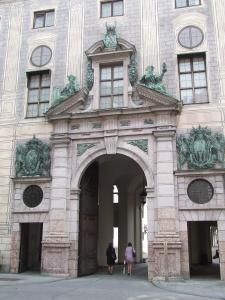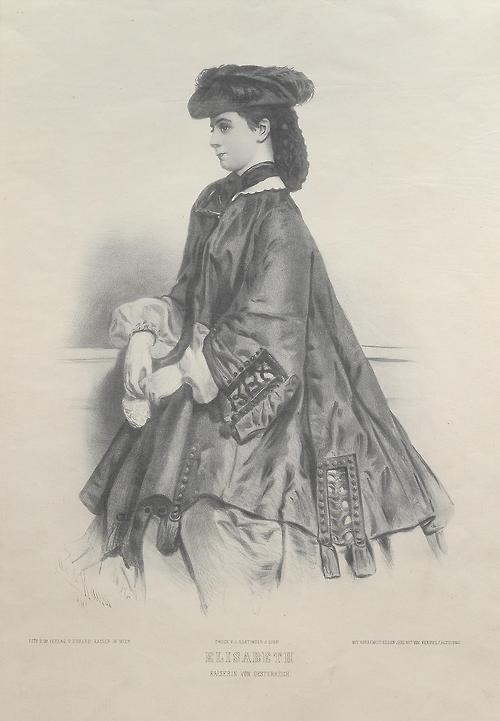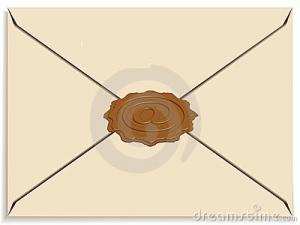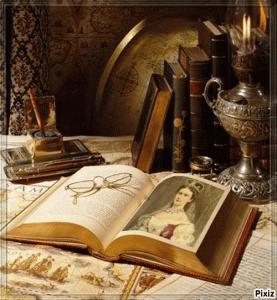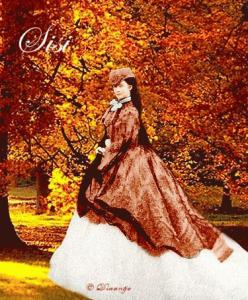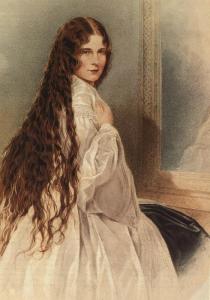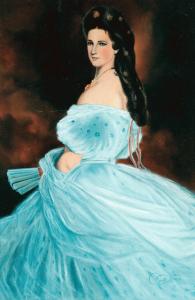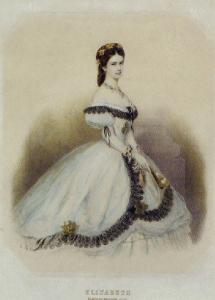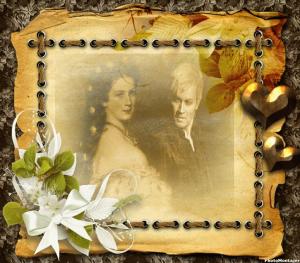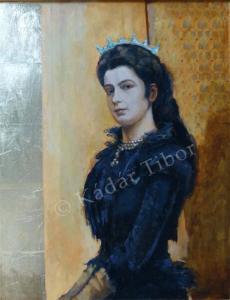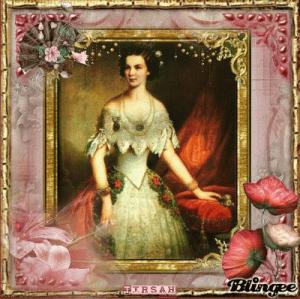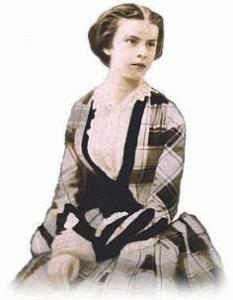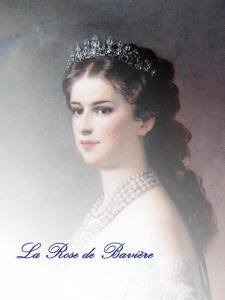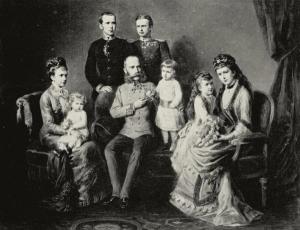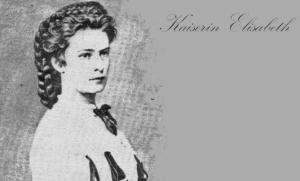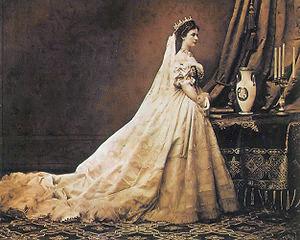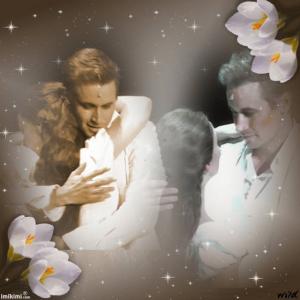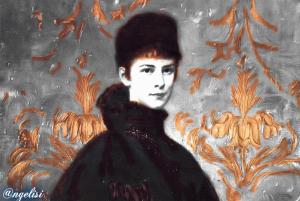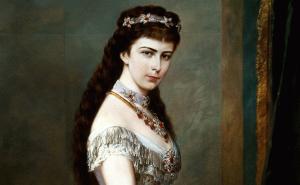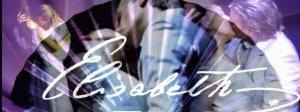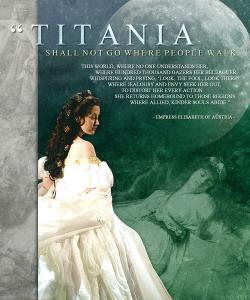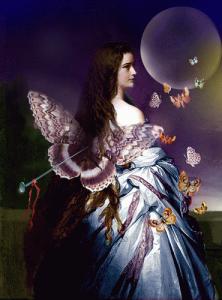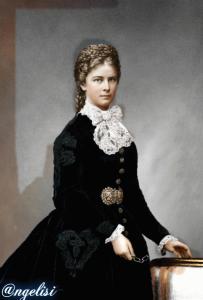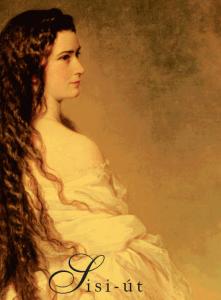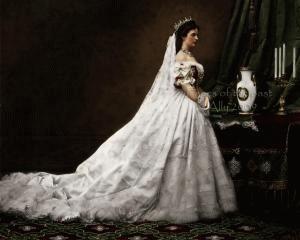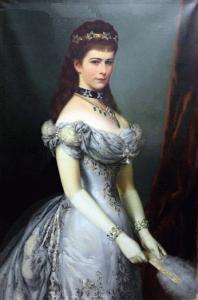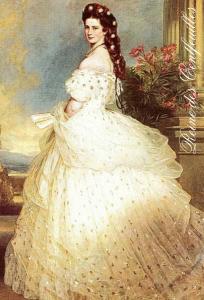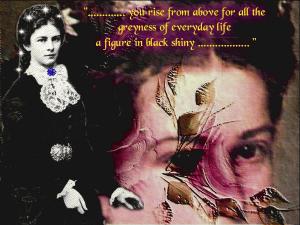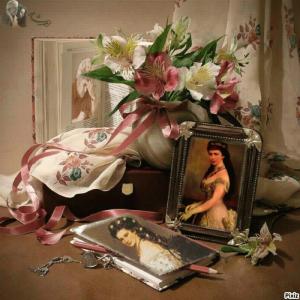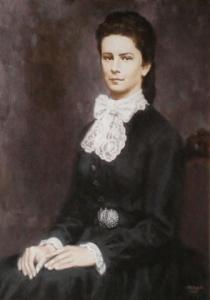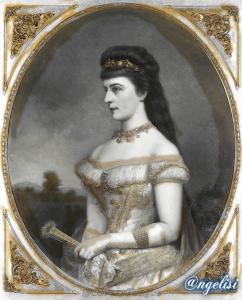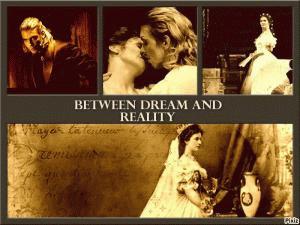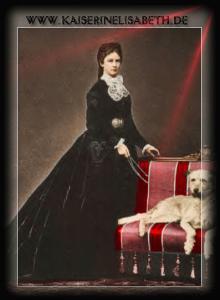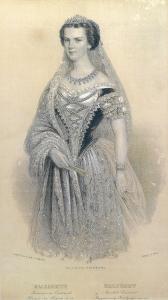The Hofburg in Vienna
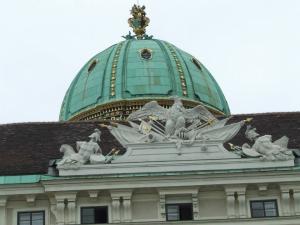
Hofburg Palace: a golden prison for many
is a palace located in Vienna, Austria, that has housed some of the most powerful people in European and Austrian history, including the Habsburg dynasty, rulers of the Austria-Hungary empire. It currently serves as the official residence of the President of Austria. It was the Habsburgs' principal winter residence, as the Schönbrunn Palace was their preferred summer residence.
The Hofburg area has been the documented seat of government since 1279 for various empires and republics.[1] The Hofburg has been expanded over the centuries to include: various residences (with the Amalienburg), the chapel (Hofkapelle or Burgkapelle), museums (theNaturhistorisches Museum & Kunsthistorisches Museum), the Imperial Library (Hofbibliothek now the Prunksaal), the treasury (Schatzkammer), the national theatre (Burgtheater), the riding school (Hofreitschule), the horse stables (the Stallburg and Hofstallungen) and the Hofburg Congress Center.
The Hofburg faces the Heldenplatz ordered under the reign of Emperor Francis Joseph, as part of what was to become a Kaiserforum that was never completed.
Numerous architects have executed work at the Hofburg as it expanded, notably the Italian architect-engineer Filiberto Luchese (the Leopoldischiner Trakt), Lodovico Burnacini and Martino and Domenico Carlone, the Baroque architects Lukas von Hildebrandt and Joseph Emanuel Fischer von Erlach (the Reichschancelry Wing and the Winter Riding School), Johann Fischer von Erlach (the library), and the architects of the grandiose Neue Burg built between 1881 and 1913
from http://en.wikipedia.org/wiki/Hofburg_Palace
Schloss Hof
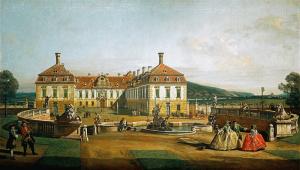
Schloss Hof
The Castle of Hof (in German Schloßhof) is an Austrian castle purchased in 1726 by Prince Eugene of Savoy, Imperial Field Marshal.
History
Prince Eugene of Savoy, who already owns many buildings in Vienna and Austria, he bought a small building in Engelhartstetten in 1726, but already in 1729 he felt the need to expand the original house and turn it into an elaborate shed hunting.
The project for the reconstruction in the Baroque style was entrusted to the architect Johann Lukas von Hildebrandt. He left as a legacy left to him the only grandson and then it was bought by the Empress Maria Theresa of Austria who joined the imperial heritage. In the chapel of the palace, in fact, married a daughter of Maria Theresa, Maria Cristina of Habsburg-Lorraine, with Albert of Saxe-Teschen in April 1766.
The castle remained unchanged until the twentieth century when it was occupied by the Wehrmacht after the Austrian Anschluss of 1938.
Even today, the structure retains within itself many of the original furnishings eighteenth century and here is held every year a festival of baroque big impact.
The Garden
The large garden of 50 hectares, is still characterized by many parterres, statues and fountains, having remained virtually unchanged since the eighteenth century.
The garden is distinctive because it consists of seven terraces are sloping, and the building is located on the second from the top so that it can enjoy a small garden behind the hotel and a large apparatus on the back. The system of terraces linked by stairs, was designed by the renowned architect Dominique Girard, the famous fountain of Louis XIV, who worked here in this way to allow the waterfall and the exploitation of the slope for the operation of the fountains and games of water the garden.
In the following description, reference is made to the map here at the side where numbers and letters in parentheses indicate the buildings and the corresponding sections of the garden.
The first terrace
The first terrace of the garden, as we have said, occupied the area around the building and therefore included the main courtyard of the castle and the gates of the structure (1a). You should probably also be a fountain of Neptune (1b) (as it appears from a number of paintings by Canaletto showing the area in the eighteenth century), but that has since been filled and removed to make way for a court best suited to transit coaches.
The second terrace
The second terrace is where is the palace itself (2a) and so little space was left in the garden that is limited to a lateral growth of two groups of parterre smaller than the other (2b).
The third terrace [edit] The third terrace, smaller, contains four small parterre (3b) which lead to other lower size. Of particular at the center of this terrace is the fountain of Najade (3c).
The fourth terrace [edit] Through a gate and a majestic staircase (4a) leads to the fourth terrace, fully covered with lush vegetation that covers the original defensive bastions of the structure. The scale of considerable size, contains in it a cave with statues depicting allegories of rivers of Austria, among which is undoubtedly the Danube.
The fifth terrace
The transition between the fourth and the fifth terrace is made possible by three imposing stairways that are configured differently also in the decorations, the middle, adorned with statues of sphinxes, contrasts in size with the side marked with statues representing the four seasons, two right and two on the left of the central staircase.
The sixth terrace The transition from sixth to seventh terrazzaL'asse middle of the sixth terrace is occupied by a monumental cascading fountain decorated with statues representing allegories of the victories gained by Prince Eugene of Savoy on the battlefield, all articulated in a descent of ' water shells bigger and smaller as the water flows down. There are in addition two side by side each from a central parterre box parterres.
The seventh terrace
The seventh terrace is the largest of garden terraces of the castle of Hof and also has a large fountain in line with the previous, this time accompanied by a large double scalianta embracing the structure and provides access to the ground plane. The garden area is here composed of box parterres with motifs and baroque decorations that converge at the center in a basin of water. At the end of the terrace there is a gate that closes the boundaries of the property.
From: http://it.wikipedia.org/wiki/Castello_di_Hof
Hermesvilla : the refuge of Titania in Wien.
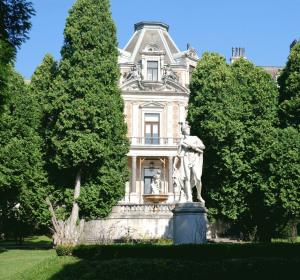
Hermesvilla : the refuge of Titania in Wien.
The Hermesvilla is a palace in the Lainzer Tiergarten, in Vienna, a former hunting area for the Habsburg nobility. Emperor Franz Joseph I gave it to his wife Empress Elisabeth (nicknamed "Sisi"), and he called it the "castle of dreams.“ The name of the villa refers to a statue of Hermes made of white marble that is located in the garden of the villa. Today, the Hermesvilla is noted for its art and natural setting, and is used by the Vienna Museum for special exhibitions on cultural history.[1]
History
Emperor Franz Joseph decided to build the Villa Hermés, originally called the "Villa Waldruh," in the summer of 1881. Ostensibly, the Emperor hoped it would encourage his wife, who traveled widely, to remain in Vienna. It was designed by architect Karl Freiherr von Hasenauer, and construction lasted 1882 until 1886.[2] In 1885, the decision was made to rename the building "Villa Hermés". The Empress herself commissioned the sculptor Ernst Herter from Berlin to create the sculpture, titled Hermés der Wächter ("Hermés the Guardian") and instructed that it was to be placed in the garden of the villa. Documents at the Stadterweiterungsfond describe numerous stone deliveries of Sterzinger Marble, Laaser Marble and Wöllersdorfer Stone for staircases in the main building. Hard Mannersdorfer Stone, Almaser Stone, Lindabrunner Stone, St. Margarethener Stone, as well as "Kaiserstein" from "Kaisersteinbruch" were used in surrounding buildings. In 1886, the villa, and all surrounding buildings, including riding facilities and stables for the horses of Empress Elisabeth, were finished. From 1887 until her assassination in 1898, the imperial couple regularly spent time there every year in late spring, varying from a few days to a couple of weeks.
In developing the grounds, Emperor Franz Joseph ordered that care be taken to flatten all the meadows and remove all molehills, expressing concern that otherwise the Empress "could not hack her horses" there. At a small pond nearby, a gazebo was built for the Empress, though it is no longer there today. The street leading to the Villa was one of the first streets in Vienna with electric lighting, and the Villa was one of the first buildings in Vienna with a telephone connection. During the post-WWII Russian occupation of Vienna from 1945-1955, the Villa was looted by the Soviets, became run down and remained in poor condition for a number of years. However, in 1963, the Disney movie "Miracle of the White Stallions" brought back the interest in the building. This led to a private initiative that motivated the Austrian authorities to renovate the Villa, and the renovation process lasted from 1968 until 1974. The first exhibition opened in 1971 as Austria's contribution to the "World Hunt Exhibition" in Budapest. Since then the Hermesvilla has become a "jewel" in the heart of the 2500 hectare nature reserve and is a popular destination, particularly for people interested in Habsburg culture, history, and the "Sisi Myth" of the beautiful and unhappy Empress who had met a tragic fate
Murals by Hans Makart, Gustav Klimt and Victor Tilgner are an integral part of the interior design.[2] On the first floor are the private rooms of the Empress. The body conscious, possibly anorexic "Empress Sisi" worked out every day in the "Turnzimmer" (gymnasium). The room was originally equipped with a balance beam, Chin-up bar for pull-ups and rings. It also contains murals in the Pompeian style by August Eisenmenger, Hugo Charlemont and Adolf Falkensteiner, showing various sports. Behind the Empress' dressing room is the bedroom of the Empress. In contrast to other rooms, here numerous historic objects have been preserved, including a gigantic baroque "state bed", dating to the time of Maria Theresa[2] that once stood in the imperial room of the postal station in Strengberg near Amstetten in Lower Austria. The murals in the bedroom are based on motifs from Shakespeare's "A Midsummer Night's Dream" and were done by Hans Markart.[2] From the bedroom, a spiral staircase leads to the ground floor and in the garden. In the salon hangs the restored painting "The Spring“ by Franz Matsch, Gustav Klimt and Georg Klimt. In front of the palace stands the sculpture "Elisabeth" by Ulrike Truger. In this statue, commissioned in 1998, installed in the Lainzer Tiergarten in 2001, and moved to the Hermesvilla in 2006,[4] the artist used the a central theme of "duty - escape - freedom“ (zwang – flucht – freiheit),[5] reflecting the Empress' inner feelings. It is made of Carrara marble,[6] stands about 2.5 metres (8.2 ft) high, and weighs 6.5 tonnes. Truger wanted the work to counter a romanticized "Sisi" stereotype.[4] The statue presents the Empress differently from each side, standing for different aspects within the personality of the Empress,[6] who chafed under the restrictions of court life: One side, "duty/obligation" (zwang) expresses the duty and obligations of her expected role. The next, "escape" (flucht ) expresses her desire to flee;[5] and finally the theme "freedom" (freiheit) is expressed with an image that includes wings.[4] Thus, Truger's interpretation of the Empress explores the interplay between structure and freedom.
The stables, originally built for the horses of the Empress, are located in the left wing of the courtyard. The original stable equipment, including the wall partitions for the box stalls and tie stalls, still exist today to a large extent. Between the horse stalls is a Rondeau, a perfectly circular round pen of 20 metres (66 ft) diameter in which the horses of the Empress were longed during bad weather. From the 1950s until 2005 these stables were used as a summer stable for the Lipizzan stallions of the Spanish Riding School. For seven weeks the stallions were given holidays at this location, where their riders gave them a change in routine from their usual work, taking them out hacking in the nearby forests of the "Tiergarten". From Wikipedia online enciclopedie
The some residence of Habsburg
Neuschwanstein Castle.
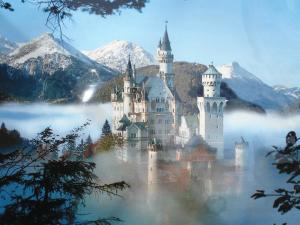
"Fairytale King" Ludwig II - Neuschwanstein Castle.
One hundred twenty-five years ago, Bavaria "Maerchenkoenig" (or "Fairytale King") Ludwig II died in mysterious circumstances at age 40, found his body floating in Lake Starnberg, south of Monaco of Bavaria. Today, Ludwig remains famous for its castles built and attempted to build, especially the castle of Neuschwanstein, perched at the foot of the Alps The king was a romantic, a friend of the composer Richard Wagner and SUPORTER, stage designers and assumed rather than architects to design its castles. More absorbed in his own world that the affairs of state, Ludwig spent most of his time to his projects - emptying his personal coffers - and left his ministers frustrated by his carelessness.
When his Cabinet accused him of insanity, was put in jail after a brief confrontation in the castle of Neuschwanstein, and was taken to a castle near Lake Starnberg. The next day, while out for a walk, Ludwig died, his lifeless body discovered hours later. The death was declared a suicide, but many have rejected that decision, and the disappearance of this popular king remains a mystery until now.
Neuschwanstein Castle, perched on a rugged hill in front of the Alps near Füssen in southwest Bavaria, Germany, having regard to the July 31, 2007. Neuschwanstein was commissioned by King Ludwig II and designed by Christian Jank, a designer of Monaco of Bavaria. Construction began in 1869, but was only partially completed, with 185 indoor an unfinished project 200
King Ludwig II, age 22, in 1867, only three years after he ascended the throne of Bavaria, after the death of his father. Although he was young and inexperienced, King Ludwig was a popular Bavarian
In 1857, Ludwig was a 12-year-old crown prince, living with his family, led by his father, King Maximilian II. Ludwig spent much of his youth living in Hohenschwangau, explore the surrounding lakes and foothills
. Shortly after his arrival to power in 1864, Ludwig II has plans to build a new, Grand Castle in this position, replacing the smallest. old ruins
1868, Ludwig had written to his friend and inspiration, composer Richard Wagner: "It 's my intention to rebuild the old castle ruin at Hohenschwangau near the canyon Pöllat in the authentic style of the old German knights' castles, and I must confess that I look forward very much to live there one day. "
The castle was completed in 1886, and was open to the public only seven weeks after the death of King Ludwig II. Ludwig himself was only able to live in the castle for a total of 172 days
Neuschwanstein Castle is now world famous tourist attraction. Criticized by many as wasteful and extravagant at the time of their construction (despite the king with his own money, not state funds), the castles of Ludwig have paid for themselves many times over the years following his death.
Ludwig was accused of madness by his cabinet ministers, was arrested in Neuschwanstein Castle June 12, 1886, and transported here at Berg Castle. June 13, 1886, around 6:00 pm, Ludwig and a psychiatrist named Dr. Bernhard von Gudden left the castle for a walk around Lake Starnberg - that was the last time anyone saw or living man. Both their bodies were found late at night, Ludwig floating face down in water to his waist. Ludwig's mysterious death was officially ruled a suicide, but theories exist from that day that the death was a murder.
each year on Lake Starnberg sicommemora death of the king and many are of the opinion that Ludwig II was killed for political reasons.
From the site: http://1x1.fi/it/5752
Bad Ischl and Kaiservilla
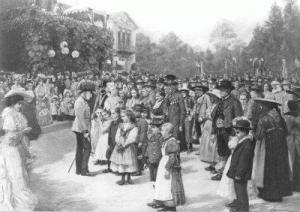
Bad Ischl and the Habsburgs
Bad Ischl has a long history, being a center of production of '"white gold" in the Salzkammergut region. The name dates back to 1192 and Ischl derives from the Celtic word Iscla or Iscula, named after the river that runs alongside the Villa Imperiale, a name that is already in a document of 829 years''. The extraction of salt was the main economic activity and source of income from prehistory to the present day. For at least 3,000 years, the salt was mined by hand and transported by boats on the river Traun and then through the Lake Traun into the Danube. The town of Bad Ischl is still associated with the Habsburg imperial dynasty since 1282. After the defeat of Ottokar II, King of Bohemia, in the battle to Dürnkrut of 1278, the King Rudolf took her under his administration that region and also named his firstborn son named Duke Albrecht of Austria and Styria. In 1284, due to the large interest in the production of salt Albrecht built in 1284 to protect the fortifications. The Tower of Rudolf, named in honor of his father, there is still above the village of Hallstatt. In 1308, after his death - Albrecht was assassinated by his nephew John - his widow, energetic woman, took the administration 's, reorganizing a state monopoly at that time was "a crown monopoly" and was still valid in the 20th century . The good state property "Kammergut" for the production of salt became a pillar of the financial resources of the Habsburgs for over 600 years. Another treasure of the underground that made the wealth of Ischl was discovered during the 19th century: the therapeutic qualities of its mineral water springs that are high in salt. Consequently Ischl was transformed from a small town to a meeting place for high society and an international center of high diplomacy. The healing power of the sources Ischl it was already known at the time of the Emperor Maximilian, but thanks to the analysis of a young doctor named Götz knew the quality of the thermal waters of Ischl for therapeutic purposes. In 1823, Dr. Joseph Götz opened the first spa. Thanks authoritative Professor Francis de Paula von Wirer, a teacher at the famous Vienna School of Medicine, Dean of the University of Vienna and personal physician of the emperor, Ischl became a health resort especially for the respiratory tract, the cardiovascular system and the ' musculoskeletal system. The Austrian State Chancellor, Prince Metternich, one of the most important politicians who spent the summer months in Ischl with their families, rented a villa built in 1834 for Dr. Joseph Eltz, Viennese lawyer. That building at the foot of the hill called Jainzen, following core Villa Imperiale, you had a gorgeous view of the city. In 1827, on the advice of Dr. Wirer the parents of the future Emperor Franz Joseph, Archduke Franz Karl and his wife Sofia, the royal family of Bavaria Wittelsbach, began to treat yourself to Ischl for the lack of children. On 18 August 1830, the future Emperor Franz Joseph was born in the Schönbrunn Palace in Vienna, July 6, 1831 the future Emperor Ferdinand Maximilian of Mexico, in 1833 their brother Luigi Carlo and Luigi Vittorio in 1842. Their sister, Maria Anna Carolina, born in 1835, died four years. In the summer of 1831 the Archduke Francis Charles el'Arciduchessa Sofia led by his son Francis Joseph at Ischl to celebrate his first birthday. In 1848, the "Year of Revolutions", Franz Joseph succeeded to the throne after the abdication of Ferdinand, uncle of Francis Joseph, who had no children. Almost every summer, the Emperor Franz Joseph, governor of all the provinces of the Crown that formed the Austrian Monarchy, he returned to Bad Ischl in his "earthly paradise." In 1849 Franz Joseph stayed for the first time as emperor in Bad Ischl. In 1906 he was declared Ischl Spa in Bad Ischl. Even today, the Emperor's birthday is commemorated in Bad Ischl with an important ceremony August 18 From the outset Imperial Villa was designed as a dwelling house for the Emperor and his family that he needed peace and quiet, away stress of the Imperial Court in Vienna. The atmosphere was intimate and jealously preserved. No guests, regardless of its importance, was never housed in the Villa, but only down to the city, especially in the Hotel Kaiserin Elisabeth or in the Hotel Bauer (demolished some time). Only the ladies of the court, the closest collaborators, the valets and in turn the waiters were staying at the Villa. The staff was in the stables or in the offices located along the river, where they were also kitchens, given that Villa had never been a kitchen. The large receptions were held usually in the "Kurhaus", built in 1875, the current theater and congress center of Bad Ischl. In this way, the imperial residence was able acoinvolgere the whole city of Ischl, rightly called "Kaiserstadt" (Imperial City) and described by the same Francis Joseph as a "paradise on earth I stay in Ischl for the Emperor meant relief, although there were from follow constant state affairs and official engagements. His favorite pastime was hunting. The Emperor was very modest and ascetic in his personal life, as you can see from the simplicity of the rooms of the Villa. His bed Spartan iron was similar to that given to junior officers in the barracks. In the morning we got up at 3:30, took a bath and then worked on state documents, taken daily to Ischl by couriers. It was breakfast with the family in a room overlooking the park or in good weather on the balcony above the entrance of the Villa. reached the parish church every Sunday, to attend the Mass. Though they were not provided official visits or institutional commitments, after consulting the barometers that were in his office and in anticipation of suitable time was hunting. Sometimes at dawn already reached the lakes and Offensee Langbathsee or the location of Zimnitz and returned about ten o'clock. was too conservative to make personal use of the new technologies of the time, but made an exception for the telegraph allowing constant communication between the Imperial Villa and the various ministries in Vienna. Ischl He then install a telegraph office. During a visit to Villa, the Tsar of Russia was able to convince him to use a cigarette lighter power that is still on his desk the Villa, but the King Edward of England failed to convince him to accept the convenience of motor vehicles. Following the death of Elizabeth in 1898, only two important things in the life of Francis Joseph. On the one hand his nephews, sons the youngest daughter Marie Valerie he adored, on the other's friendship with his "soul mate" Catherine Schratt, actress at the Burgtheater in Vienna, which was used during the summer to rent Villa Felicita, who was outside of the city of Ischl. every early morning Franz Joseph went there alone, but under the supervision of their discreet. security personnel and had breakfast with Mrs. Schratt. completely different was the life of Sisi in Ischl. came in there ' age of 16 years and as an Empress and hostess was also involved in state visits. He received and accompanied the wives of kings and politicians, while Franz Joseph and personalities were engaged in discussions and diplomatic relations. Unlike of her husband, Elizabeth was devoted to sport and physical well-being. In Imperial Villa had reserved a room like his gym where he had some exercise equipment, but when he could, did gymnastics directly in the Hall Red between two large oval mirrors. His passion was the 'riding and also why there were as many as 50 horses in the stables. His long walks were famous and hard for their ladies in waiting with their voluminous skirts. Managing to go hand in hand with the Empress was a company almost impossible. It was on excursions and a few days in the mountains of 'Aussee, but also in the Taurus Mountains to more than 3,000 meters which are still a challenge for climbers with modern equipment. On nice days he did his gymnastics even outdoors on the slopes of Jainzen that as a teenager Elizabeth called "Zauberberg" (magic mountain). Attracted by her charms, often withdrew to a small wooden shelter on Jainzen who enjoyed a beautiful view of the mountains. was his favorite place to read, write, draw and paint. In 1951, after 60 years, Elizabeth made sure that his poems were published in the Consisting largely Ischl, speak of this beautiful region, in which the wonderful days spent together with their sons.'s more a matter of great interest was also to collect photos of family members, chiefly those of the favorite daughter Marie Valerie. The eldest daughter, Sophie (1855-1857) died at the age of two years during a trip to Hungary. Consequently the mother of the Emperor took custody of two other children, their grandchildren, Gisella and Rudolph, crown prince. therefore Elizabeth did not want to leave even the youngest daughter Marie Valerie They spent the holidays together in Ischl, affezionandosi with that environment. Marie Valerie celebrated their wedding here and then receive the Imperial Villa in heritage and passed it on to their heirs.'m his direct descendants who now make possible the guided tours. presence of the imperial family at Ischl was a fixed element. were many opportunities to meet, such as theater and while shopping. The imperial couple also helped the needy. A Ischl took place not only countless receptions, dances and ceremonies of all kinds, but also diplomatic discussions of the great powers of the 19th century. Here the Emperor received the reigning monarchs of Europe, Chancellor Otto von Bismarck of Prussia, President Ulysses S. Grant in the United States and the King Chulalongkorn of Siam, in honor of whom was given the operetta "Die Fledermaus" ( "The Bat") by John Strauss on the podium as a Director in June 1897. Following the gala performance the king decorated with Strauss' "Order of the White Elephant." A century later, in 1997, that visit was commemorated with exotic a ceremony and a historical exhibition staged in the Villa Imperiale, as suggested by the Thai royal family itself. Following the death of Crown Prince Rudolf January 31, 1889, and the upheavals that followed, the family retired to Ischl two months earlier than usual, to escape oppressive atmosphere in Vienna. In the following year, however, on July 31, 1890, the imperial family celebrated the wedding of Marie Valerie, the youngest daughter of Francis Joseph and Elizabeth, conveyed in marriage to his cousin Francesco Salvator Habsburg of the Tuscan branch of the family, in the parish church of St. Nicholas. Villa Imperiale is still inhabited by the Habsburgs, direct descendants of Franz Joseph and Elizabeth, grandchildren Francesco Salvator and Marie Valerie. Villa became the summer residence of the emperor and thus the Court also moved from Vienna to Ischl in those times it became the imperial capital and residence of cultural life, especially with regard to the music and operettas. Countless masterpieces of world-renowned were created in the serene environment. FROM THE SITE: http: / / www.kaiservilla.at / en / live-a-bad-ischl.html
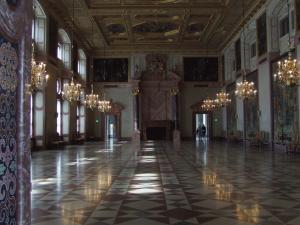
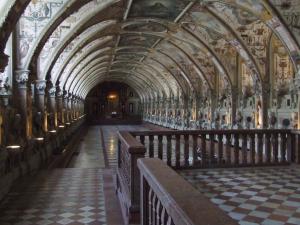
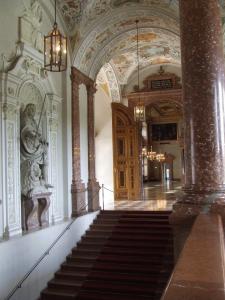
Munich Residenz
The Munich Residenz (Münchner Residenz, Munich Palace) is the former royal palace of the Bavarian monarchs in the center of the city of Munich, Germany. The Residenz is the largest city palace in Germany and is today open to visitors for its architecture and room decorations, and displays from the former royal collections. The complex of buildings contains ten courtyards and the museum displays 130 rooms. The three main parts are the Königsbau (near the Max-Joseph-Platz), the Alte Residenz (towards the Residenzstraße) and the Festsaalbau (towards the Hofgarten). A wing of the Festsaalbau contains the Cuvilliés Theatre since the reconstruction of the Residenz after World War II. It also houses the Herkulessaal (Hercules Hall), the primary concert venue for the Bavarian Radio Symphony Orchestra. The Byzantine Court Church of All Saints (Allerheiligen-Hofkirche) at the east side is facing the Marstall, the building for the former Court Riding School and the royal stables. Architecture The first buildings at this site were erected in the year 1385. The sturdy new castle (Neuveste - new fortress), surrounded by wide moats at what used to be the very north eastern corner of the new double ring of walls, replaced the difficult to defend Old Court in the middle of the town as residence of the Wittelsbach rulers. The dukes of the often divided country felt the urge to keep some distance from the frequently rebellious city dwellers at the one hand and for some defense against their warlike relatives at the other. So they sought to build themselves a shelter impregnable and easy to leave (directly towards the glacis, without having to enter city lanes) at the same time. The gothic foundation walls and the basement vaults of the old castle are the oldest surviving parts of the palace. The Residenz's development over the centuries didn't only take place out of its main nucleus, the Neuveste, but in addition it grew together out of several single parts and extensions, the first of which used to be the Antiquarium (see below). Finally, after more than four centuries of development, the giant palace had practically replaced a whole former city quarter with barracks, a monastery, houses and gardens. It assembles the styles of the late Renaissance, as well as of Baroque, Rococo and Neo-Classicism. With the order of William IV (1508-1550) to expand the Neuveste with the so-called Rundstubenbau and to set up the first Court Garden began the history of the Munich Residence as a representative palace. To the history cycle of this garden pavilion belonged once also the Battle of Issus of Albrecht Altdorfer. Maximilian I (1597–1651) commissioned what is now called the Old Residenz (Alte Residenz), the west wing of the palace. Today's admeasurements are from the times of Ludwig I of Bavaria (1825–1848), who instructed his architect Leo von Klenze to build the King's tract (Königsbau) in the south in the style of the Florentine Palazzo Pitti, the neoclassical 250 m-long Banqueting Hall wing (Festsaalbau) in the north and the Byzantine Court Church of All Saints (Allerheiligen-Hofkirche) at the east side. Facing the church, the Marstall, the building for the former Court Riding School and the royal stables, was erected by Klenze in 1817-1822. The Max-Joseph Denkmal at Max-Joseph-Platz before the Königsbau, was created as a memorial for King Maximilian Joseph (1799-1825) by Christian Daniel Rauch and carried out by Johann Baptist Stiglmaier, but only revealed in 1835 since the king had rejected to be eternalized in sitting position. The Winter Garden was commissioned by Ludwig II of Bavaria (1864-1886). After the king’s death, the Winter Garden on the roof of the Festsaalbau of the Residenz Palace (ca. 1870) was dismantled in 1897 because of water leaking from the ornamental lake through the ceiling of the rooms below. Photographs and sketches still record this incredible creation which included a grotto, a Moorish kiosk, an Indian royal tent, an artificially illuminated rainbow and intermittent moonlight.[1] Inside the palace The Hall of Antiquities (Antiquarium), built in 1568-1571 for the antique collection of Albert V (1550–1579) by Wilhelm Egkl and Jacobo Strada, is the largest Renaissance hall north of the Alps. Remodeled into a banquet hall by Friedrich Sustris in 1586-1600. The Antiquarium housed the ducal library until 1581. The low hall was then covered with a barrel vault that had 17 window lunettes. The hall was adorned with paintings by Peter Candid, Antonio Ponzano, and Hans Thonauer the Elder, though some were initially designed by Sustris himself. The Court Chapel (Hofkapelle), the Emperor's Staircase (Kaisertreppe) and Imperial Hall (Kaisersaal), the Stone Rooms (Steinzimmer; 1612–1617; general design by Hans Krumpper) and the Trier Rooms (Trierzimmer); ceiling frescoes by Peter Candid) built for Maximilian I are typical for the early 17th century. The baroque era is represented by the Papal Rooms (Päpstlichen Zimmer), erected under his son Ferdinand Maria (1651–1679). Later Pope Pius VI lived here during his visit in Munich in 1782 and the rooms were named after him. The extensions of Maximilian II Emanuel (1679-1726), especially the Alexander room and Summer room as representative living rooms, have already been altered shortly after his death. The remains were destroyed in the residence fire of 1729. The Ancestral Gallery (Ahnengallerie; 1726–1731) with the Porcelain Cabinet (both constructed by Joseph Effner) and the Ornate Rooms (Reichen Zimmer) designed by François de Cuvilliés for Charles Albert (1726–1745) are magnificent examples for the court Rococo style. The rich decoration was done by Johann Baptist Zimmermann, Joachim Dietrich and Wenzeslaus Miroffsky. The two-story exterior façade of the Green Gallery (Grüne Gallerie) in the Ornate Rooms, with its seven arched windows in the yard of the Königsbau is a masterpiece of Cuvilliés. The Green Gallery, which was named after the wall covering made of green silk damask, was not only a ballroom, but also a gallery for paintings and mirrors. The magnificent Bedchamber (Paradeschlafzimmer) served for the electoral dressing procedure. Under Maximilian III (1745–1777) the Apartments of the Elector (Kurfürstenzimmer) were constructed between 1746 and 1763 by Cuvilliés and Johann Baptist Gunetzrhainer. Also the Residenz Theatre was added under Maximilian III from 1751. The neoclassical epoch is represented especially by the Charlotte Rooms (Charlottenzimmer) but also by the Royal Apartments and the Halls of the Battles (Schlachtensäle) in the Königsbau. The wall and the ceiling paintings by Julius Schnorr von Carolsfeld in the Nibelungensäle (Nibelungen Halls; 1827–1834) produced in the same period are the first monumental representations of the Nibelungenlied. The actual private chambers of the royal couple on the back of the Königsbau are no longer existent because they were destroyed in World War II. Leo von Klenze was not only responsible for the architecture, but also designed the floors, the wall paintings and all furniture. In the Festsaalbau were spacious halls that contained the Grand Throne Room in the center, the Imperial halls, the ballroom and the Battle Hall in the northeast pavilion. These facilities were intended only for state occasions and only accessible by a grand staircase which does not longer exist. There were the most important ceremonies, surrounded by twelve colossal statues of Ferdinand von Miller, who represented the main Bavarian rulers. Additionally to the rich accumulation of furniture, paintings and sculptures, today the museum contains bronze work, clocks, tapestries, porcelain and several special collections. The Allerheiligen-Hofkirche (Court Church of All Saints) was commissioned in 1825 by Ludwig I of Bavaria, inspired by the Cappella Palatina, the richly decorated Byzantine royal chapel in Palermo. As bombs destroyed all but the outer walls in 1944 its rich interior ornament was almost completely lost. The Festsaalbau also houses the Bavarian Academy of Sciences and Humanities while the Bavarian Academy of Fine Arts is situated in the Königsbau. One of the primary concert venues for the Bavarian Radio Symphony Orchestra is the Herkulessaal (Hercules Hall) in the Festsaalbau of the Residenz. The treasury Founded by Albert V the house jewels of the Wittelsbach are today on display in the treasury (Schatzkammer), ten halls in the east wing of the Königsbau. The collection is one of the most important in the world and spans 1000 years from the early Middle Ages to Neoclassicism. On display are royal insignia, crowns, swords, goblets, goldsmith work, rock crystal, ivory work, icons and numerous other treasures like precious tableware and toiletries. Among the exhibits are for example Emperor Charles the Bald's prayer-book (ca. 860), the altar-ciborium of Emperor Arnulf of Carinthia (ca. 890), the crown of the Empress Cunigunde, reliquary of the True Cross which belonged to the Emperor Henry II, a cross which belonged to Queen Gisela (all ca. 1000), the Reliquary Crown of Henry II (ca. 1270), an English Queen's crown (ca. 1370; The oldest surviving crown of England that came to the palatinian line of the house of Wittelsbach as dowry of the daughter of Henry IV), the famous Statuette of St George (Munich, ca. 1599), the insignia and orders of the Bavarian kings, including crowns and insignia of the Emperor Charles VII (1742), the Crown of Bavaria (1807), ceremonial swords and ruby jewelry which belonged to Queen Therese. A precious set of matching dishes served the French Empress Marie Louise during her journeys. Also Non-European art and craftwork, including Chinese porcelain, ivories from Ceylon and captured Turkish daggers are shown. Founded already by Albert V. the Residenz houses also the Bavarian state's coin collection. With more than 300,000 coins, medals and banknotes from the ancient world to the present time it is one of the world's leading collections. Hofgarten The Court Garden (Hofgarten) at the northern side opposite to the Festsaalbau was laid out under Maximilian I. In the middle of the park in French style a circular temple (1615) is crowned by a statue of Bavaria (1594 by Hubert Gerhard). The western Hofgarten arcades with the gate were done by Klenze, the northern wing with the former electoral gallery houses a theatre museum. The remnansts o some renaissance arcades in the north east of the park were integrated to the Bavarian State Chancellery in 1992. (The people of Munich love to denounce it as Straussoleum, after a former state prime minister who commissioned it, or even Munich White House, in reference to the long and hard fights that prevented the state government from erecting three giant wings instead of one. These wings supposedly would have destroyed the overall impression of the court gardens. Its middle section with the now reconstructed dome is the only remnant of the former Bavarian Army Museum, constructed already in 1900-1905 and almost completely destroyed during the bomb raids of World War II. That museum is nowadays located in the Neues Schloss in the city of Ingolstadt, 80 km north of Munich. From Wikipedia online enciclopedia
